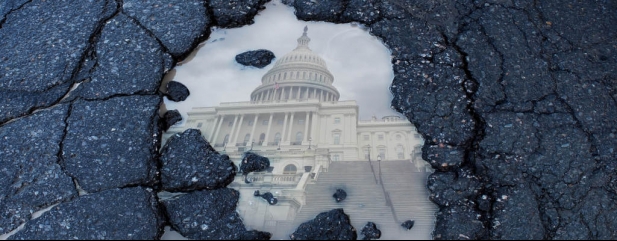Archived article
Please note that tax, investment, pension and ISA rules can change and the information and any views contained in this article may now be inaccurate.
Winners and losers in the $1 trillion ‘American Jobs’ infrastructure bill

Coming in at more than 2,000 pages, the bipartisan bill to revamp the US’s ageing – and in some cases crumbling – infrastructure has taken months to put together and has inevitably resulted in a compromise.
While president Joe Biden can take many positives from the deal, which forms a crucial part of his economic agenda, he will no doubt be ruing the reduction in funding for clean energy and the inclusion of various pet projects by some of the legislators.
Still, taken as a whole, the $1 trillion bill represents the biggest government outlay on public works projects in more than a decade. To put it in perspective, the post-war Marshall Plan to rebuild Europe after the Second World War cost the equivalent of $132 billion in today’s money.
RAIL, ROADS AND BRIDGES
According to data from the G20 Infrastructure Hub, the US typically spends just 1.6% of its annual gross domestic output in any given year on infrastructure compared with an average of close to 3% in Europe, over 3% in Japan and 6% in China.
One aspect of the plan which will please the president, known affectionately as ‘Amtrack Joe’ for his habit over many years of commuting daily from Wilmington, Delaware to Washington, will be the $66 billion of funding allocated to the US railroad company to reduce its maintenance backlog as well as to upgrade the heavily used Northeast Corridor route from Washington to Boston.
The core of the spending plan is on roads and bridges. According to a 2018 Department of Transport report, a quarter of US bridges need significant repair or simply cannot handle current traffic levels.
Between 2000 and 2019, freight truck delays in urban areas increased by more than 75%, costing the US economy in the region of $75 billion in lost output last year according to the American Transportation Research Institute.
The infrastructure plan calls for modernising 20,000 miles of highways, roads and main streets, fixing the 10 most economically important bridges and repairing the worst 10,000 small bridges.
This is great news for UK companies like Hill & Smith (HILS), which provides road signage and barriers, Keller (KLR) which provides geotechnical services and groundworks, and Ashtead (AHT) which supplies rental equipment for construction projects.
The impact on earnings won’t be instant, but it could be significant. ‘Projects we work on need preparation so it may a be a year before we get involved. However, it certainly puts us on the front foot,’ says Keller chief executive Michael Speakman.
GREEN SPENDING FALLS SHORT
The bill includes $73 billion to modernise the nation’s electricity grid, the biggest government investment in power transmission in history, which will be essential for weaning the US off fossil fuels, but it also extends subsidies for natural gas and nuclear power.
Also, while the country has experienced everything from ice storms to floods and wildfire this year, money which has been earmarked to ready the country for the worst effects of global warming is going to existing projects rather than new initiatives.
In other areas, such as replacing lead water pipes across the country, funding is a fraction of the money industry
RAW MATERIAL BOOST
Adding up the investment set aside for the electricity grid, the electrification of the transport system, broadband and various other projects, the need for raw materials such as copper and nickel is set to soar.
According to a White House briefing paper, US demand for refined copper is set to grow by 6% per year over the next five years, with 2% of the increase due to the infrastructure plan.
Electric vehicles contain up to 10 times more copper than internal combustion engine vehicles and each electric bus contains an estimated 370 kilogrammes of the metal. Even replacing a fifth of the US yellow school bus fleet with electric buses could mean an additional 35,000 tonnes of copper are needed, according to Statista.
High-grade nickel is a key component in electric vehicle batteries, and car makers are already in a race to secure supply deals, so increased demand from the US will only push global prices higher.
Rather than trying to pick individual winners, investors can play the raw material angle using London-listed exchange-traded funds (ETFs) such as WisdomTree Copper (COPA) which tracks the copper price; and WisdomTree Nickel (NICK) which tracks the nickel price.
Disclaimer: The author owns shares in the Wisdomtree Nickel ETF
Important information:
These articles are provided by Shares magazine which is published by AJ Bell Media, a part of AJ Bell. Shares is not written by AJ Bell.
Shares is provided for your general information and use and is not a personal recommendation to invest. It is not intended to be relied upon by you in making or not making any investment decisions. The investments referred to in these articles will not be suitable for all investors. If in doubt please seek appropriate independent financial advice.
Investors acting on the information in these articles do so at their own risk and AJ Bell Media and its staff do not accept liability for losses suffered by investors as a result of their investment decisions.

 magazine
magazine








